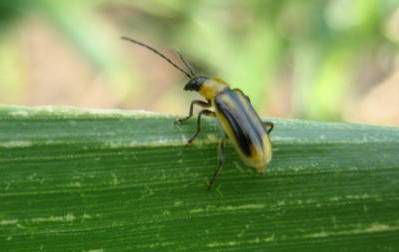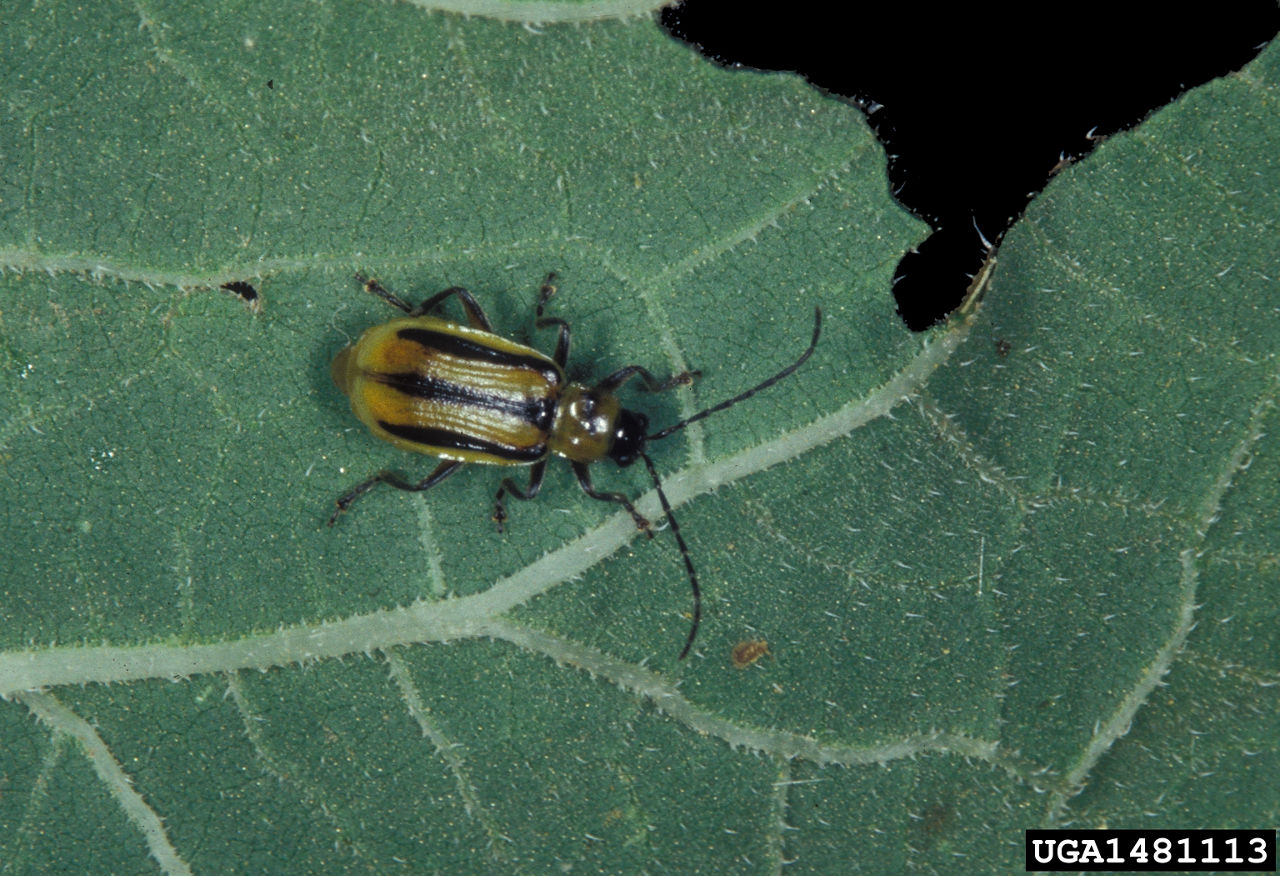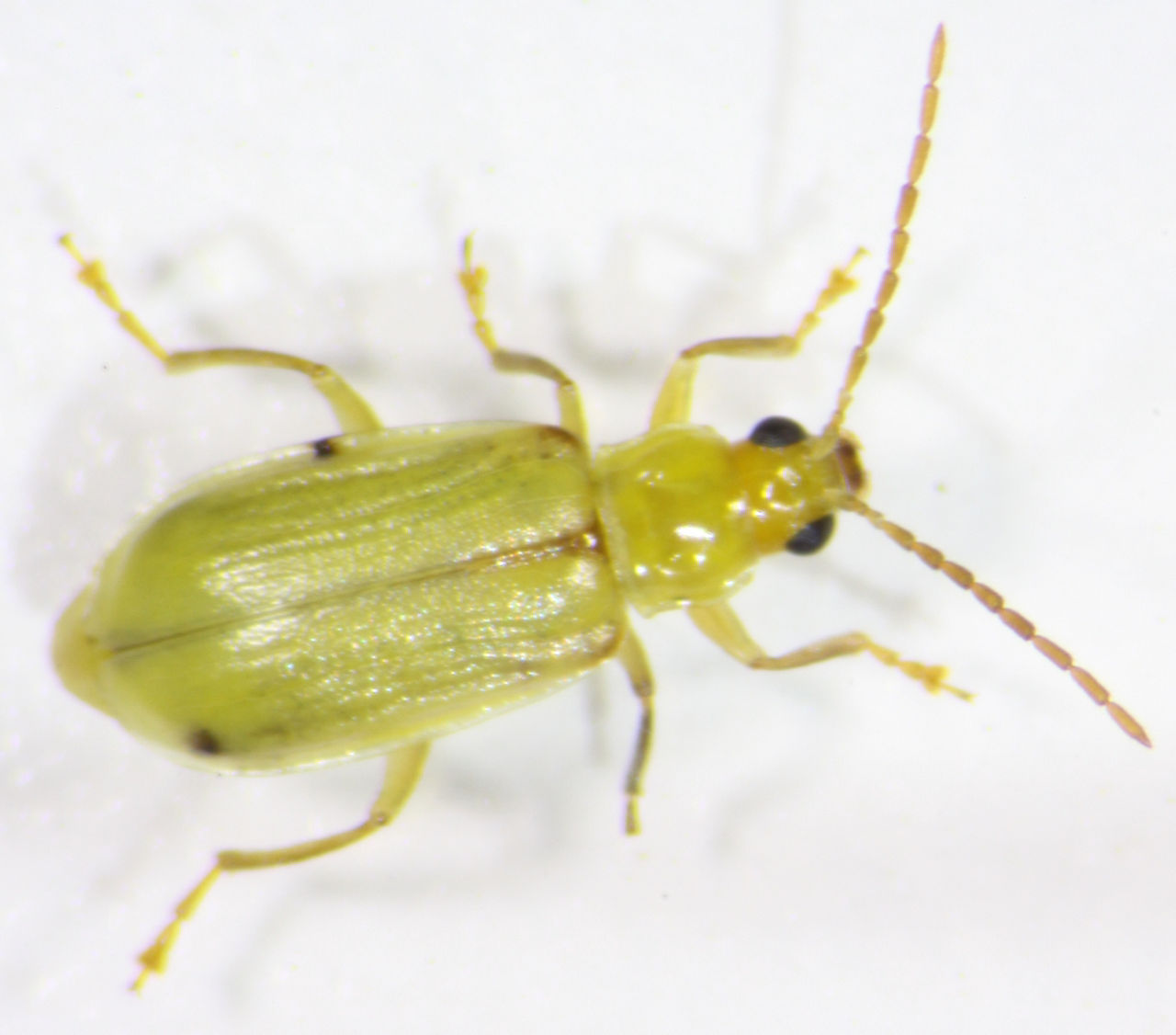Techniques for Rootworm Beetle Scouting
July 19, 2023
Effective corn rootworm (CRW) beetle scouting can help assist growers from saving on input costs to reducing the risk of economic loss due to CRW. Correct timing of CRW scouting and if needed, economic controls, can help lower the risks of silk clipping and feeding by CRW beetles in the current crop and can help reduce the potential number of eggs laid that may over winter and hatch the following season.
Two species of CRW are primarily responsible for the damage in the Corn Belt. These include the western corn rootworm (WCR) and the northern corn rootworm (NCR). The WCR male (Figure 1) is identified by nearly black wings, while the WCR female (Figure 2) has black striped wings. The NCR adults are yellow green to green in color with the female (Figure 3) having an elongated abdomen compared to the northern male.



Beetle counts are a critical component of an accurate assessment of CRW pressure in a corn field. Scouting for adult CRW beetles should begin at R1 growth stage and continue through September. There should also be specific emphasis placed on late planted fields, previous year acres with substantial volunteer corn, and areas where NCR extended diapause is a concern.
For scouting, randomly visit 25 different locations in a field and select two plants per location for a total of 50 plants. All beetles on every plant must be counted. In general, with a plant population/acre of 32,000, if there are greater than 0.56 beetles/plant in continuous corn and 0.42 beetles/plant in first year corn, there is potential for high yield loss due to the potential mass of eggs laid that can hatch the following season if no control tactics are utilized.5
Adult beetles start to have an impact on silk clipping and pollination success when the density reaches 5 or more beetles/plant.4 Severe silk feeding (when silks are clipped within one inch of the husk) at 25 to 50% pollen shed may indicate the need to apply an insecticide.
If an insecticide is merited, adult beetle control programs should begin when the economic threshold is exceeded and at least 10% of the females are gravid (abdomen visibly distended with eggs). This is important because the male adults will emerge first, and the females must feed 10 to 14 days before they can lay eggs.
An effective scouting program is one control measure to help control the billion-dollar CRW pest.3 This is very much a layered approach that begins with effective trait selection, crop rotation, and proper insecticide timing to help preserve yield potential and limit the overall CRW population.
Tyler Vreugdenhil
Channel Technical Agronomist in South Central Nebraska
Sources:
1Wright, B. 2009. Use corn rootworm scouting numbers as basis for 2010 production decisions. CROPWATCH. University of Nebraska-Lincoln. https://cropwatch.unl.edu/corn-rootworm-7-24-09
2Anonymous. Corn rootworm. Crop Sciences Extension & Outreach. University of Illinois at Urbana Champaign. http://extension.cropsciences.illinois.edu/fieldcrops/insects/corn_rootworm/
3Nordhaus, H. 2017. A beetle is destroying U.S. corn, so scientists are punching at the insect’s genes. Scientific American®.
4Hodgson, E. 2021. Corn silk (and feeders) are out – assess pollination in fields. Integrated Crop Management. Iowa State University Extension and Outreach, Ames. https://crops.extension.iastate.edu/cropnews/2021/07/corn-silks-and-feeders-are-out-%E2%80%93-assess-pollination-fields
5Wright, R.J., Meinke, L.J., and Jarvi, K.J. 1999. EC99-1563 Corn rootworm management. University of Nebraska-Lincoln. https://digitalcommons.unl.edu/cgi/viewcontent.cgi?article=2082&context=extensionhist
Web sites verified 5/24/23